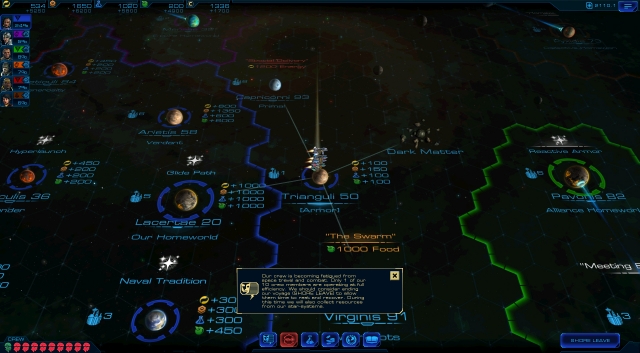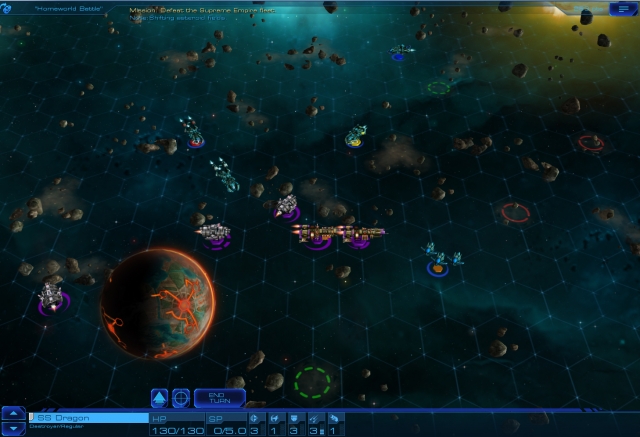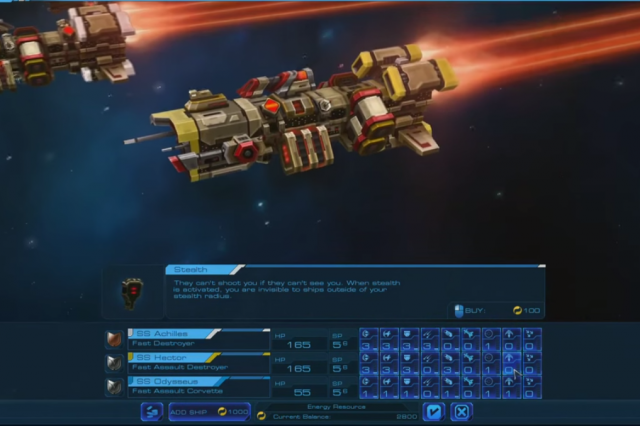
Sid Meier's Starships Review
The name of Sid Meier has attained a godlike status amongst strategy gamers and, it could be argued, for very good reason. Known as a developer who plays his games over and over until he deems them fun enough to launch, many of his myriad of releases are instant classics. None more so than his magnum opus franchise, Civilization. That series was followed by sci-fi spinoff Beyond Earth last year which, while certainly having many of same mechanics, fell short of its predecessor’s glory and of matching Meier’s much-loved Alpha Centauri.
Now Meier has sought to expand the universe he created in Beyond Earth with his new release Starships. A tactical turn-based space sim, you’d be forgiven for getting overly excited at the prospect of Meier returning to the type of game that made Pirates! so beloved. Yet, despite showing a glimpse of promise, the game falls disappointingly flat.
In Starships you take on the role of an already-established civilisation that has prospered on an alien planet following the events of Beyond Earth. Curious as to the status of other human cultures that fled to the stars, your civilisation sets about exploring the galaxy. As is to be expected, there is much grandeur and pomp in how the story is set out but as the gameplay kicks in you're left feeling a little deflated.

Before you start your journey you must choose, first from the three types of culture you can attain in Beyond Earth (Purity, Supremacy and Harmony) and then from a selection of ‘commanders’. Each provides different bonuses and effects on your civilisation. However, after a number of hours in the game it’s hard for me to tell you exactly how much these bonuses really affected my game.
You start with three starships, each stylised according to your choice of culture. With your initial bank of currency you can choose to upgrade these craft with better weapons (in the form of torpedoes, plasma beams and lasers) or defences (like shields, armour and stealth). With these ships you can begin your journey by interacting with surrounding planets and starting a variety of missions. These can range from escort duties to straight out space battles, all taking place in a flat arena consisting of hexagonal spaces.
With little in the way of tutorial the player is bombarded with information from the get-go. While there are many bells and whistles to the overworld – displaying resource collection, science accumulation, trade, buildings and other information – none of it is explained well enough for the player to really know what’s going on.

The battles and missions take place within a flat space, which is thoroughly disappointing considering the fact that space is perfect for multi-plane combat. Unlike the grand strategy that takes place during games of Civilization, most battles consist of moving your ships close to the enemy and then exchanging fire until one of you dies. Following victories your crew will level up and gain fatigue, which can be recovered by taking “shore leave”, effectively an end turn button.
Victory conditions for the game consist of the very familiar “domination, scientific, diplomatic” options that players are given in previous Meier games. How you achieve these, though, is never really explained. Finishing missions and going on shore leave expands your influence with planets. Gain enough and the planet will join your federation, providing you with science, credits and other bonuses. You can then use these to upgrade your ships and take more missions. It’s a formula seen a thousand times in MMOs and the grind becomes monotonous very quickly.
Much like the mission structure, the game’s soundtrack is satisfactory but not exceptional. Listen for long enough and you’ll have the usual fare of synth-based eerie melodies and rousing exploratory crescendos. The battle music is a forgettable loop of beats and bass. The voice work, though in places well done, is on the whole unremarkable. Particularly in battles, when the same candid lines are repeated over and over again with no variation.
The graphics in Starships are equally underwhelming. While upgrading your ships will increase their size and bolt on larger (and cooler looking) gadgets and weapons, these never look particularly impressive. Despite their upgrades and changes, most ships look so similar to each other that at times it’s hard to figure out which you’re controlling. Enemy ships are just as unimaginative, coloured grey as standard and never really looking anything more than what you’d expect a child to draw if you told them to sketch a spaceship.

Before battles and on the overworld you can ask for advice and get information on planets and enemies, yet even this is confusing and poorly presented. While the voice over work is commendable in parts (every planet is read aloud as you approach it), some parts of the game throw inexplicable walls of text at you. For example, when asking for advice on an upcoming battle, you’ll be taken to a screen where you advisor spouts reams of scrollable text at you to read. I can’t help but think that a simple voice over with a few stats would have been much better.
The game will also give you insurmountable odds for pathetically easy missions. One mission I encountered said a swarm of enemies was attacking a planet. I checked my chances and was told that I had a 22 per cent chance of victory. I finished the mission without any of my three ships losing more than half health. Even on the hard difficulty mode all I had to do was sit and wait for the enemy to move into range and shoot them out of the sky.
All of these faults have lead me to conclude one thing about Sid Meier’s Starships: it’s a casual tablet game disguised as a real release. From the graphics to the touch-friendly UI to the fact that the game opens in a tiny window on first launch. Achievements in the game can also be used to unlock features in Beyond Earth. In fact had the game been a tablet or phone release it would probably be receiving resounding praise, rather the accusations of lethargy and greedy cash-grabbing.
The game may well be a tie-in to the series but the ire of fans is understandable. Following the lukewarm reviews that Beyond Earth received, Starships was a great opportunity to expand on the setting that has sadly been missed. Poor graphics and mechanics mean that the game is barely tolerable for more than an hour or so. If you’re looking for a game to play on that aging laptop your mum owns, Starships might be worth it. If not, there are far better space games on Steam that are worth your time and your money.
Sid Meier's Starships (Reviewed on Windows)
The game is average, with an even mix of positives and negatives.
Starships would have worked much better as a smaller form release. As it is, it's an underwhelming tack-on to the already forgettable Beyond Earth that feels rushed and unoptimised. Had it been on a tablet things may have been much different.











COMMENTS